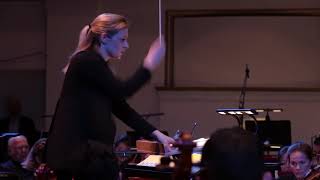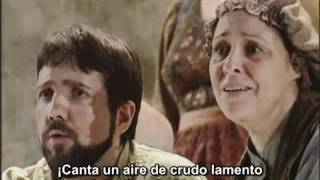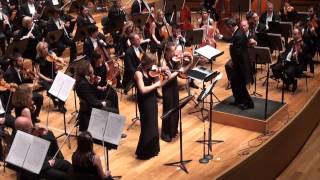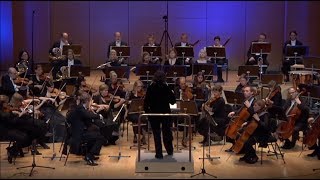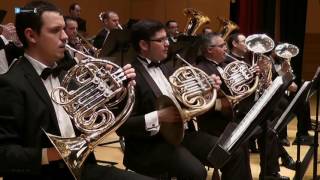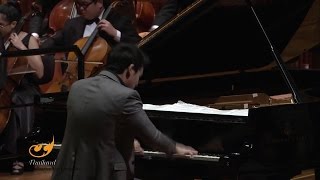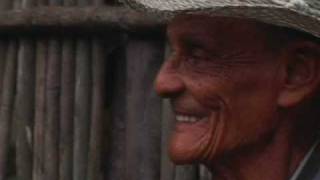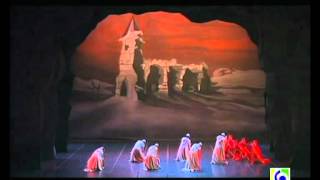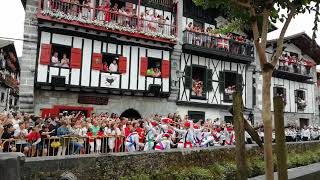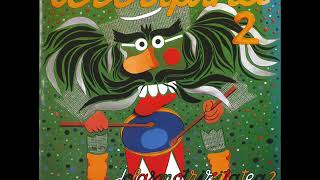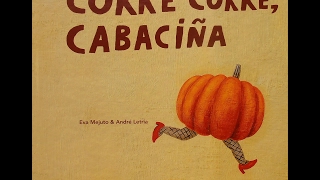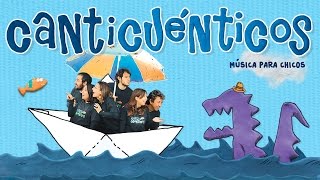At 12 noon on July 6, the San Fermín Festival begins with the chupinazo (firecracker).
Recommended music videos for initiation to classical music
Manuel Gainza was a Gipuzkoan musician born in Tolosa on May 18, 1885 and who died in Getxo on April 1, 1943. A disciple of Gorriti and Mocoroa , he was also organist of the parish of Sestao , and director of the Orfeón Trabajo y Cultura and the Choral Society of Portugalete (1906-1907). His connection to the choral world is also reflected in the founding of the Biotz-Alai Choir of Getxo in 1926. On the other hand, he composed works for band and for txistu, being at the same time the author of various harmonies; several of his compositions and harmonies are published in the magazine Txistulari . ( Auñamendi Eusko Entziklopedia )
Biribilketa, Kalejira, Pasacalles, Martxa, Martxea, Karrikadantza, Basque March , ... many names to express a single reality: the meaning of these terms is very common: a light march, usually written in 6/8 time (but sometimes in 2/4). The phrases are square, sixteen bars long, although they often consist of eight repeated bars, generally with an antecedent-consequent structure. In general, they fulfill all the conditions of European classical music (extracted from Auñamendi Eusko Entziklopedia).
Gainza's Biribilketa is the first piece to be performed during the Sanfermines festival after the Txupinazo in the entrance hall of the Town Hall , by La Pamplonesa (the Municipal Music Band) and the Txistularis of Pamplona and Navarra ,
Wolfgang Amadeus Mozart (1756-1791) is considered one of the three giants of musical composition, along with Bach and Beethoven . A child prodigy born in Salzburg , Austria, he mastered the keyboard and violin at the age of six and began composing. His father, Leopold , exhibited him on exhausting tours of various European courts. A prolific composer (more than 600 works written from the age of five until his death), he cultivated all kinds of musical genres: piano works, chamber music, symphonies, concertante works, choral works, operas... each and every one of them a masterpiece of their kind. His operas The Magic Flute, Don Giovanni, Così fan Tutte, and The Marriage of Figaro are among the 10 most performed operas in the world. He died in Vienna at the age of 35.
The catalogue of Mozart's works or Köchel Catalogue ( Köchel Verzeichnis, in German) was created by Ludwig von Köchel in 1862 and lists the musical works composed by Wolfgang Amadeus Mozart . Each of Mozart 's works is designated by a number preceded by the abbreviation K. or KV ; this number designates the chronological order of its creation and which is actually valid for most of the works; however, in its first edition, works by other authors appear erroneously attributed to Mozart , and other authentic works that had not yet been discovered are omitted.
Symphony No. 35 in D major, K. 385, known as the "Haffner," is a symphony composed by Wolfgang Amadeus Mozart in 1782 that demonstrates the evolution of the classical symphony. In fact, it is the first symphony he composed away from Salzburg , his family, the archbishop, and the citizens of Salzburg , among whom he felt "impossible to experiment freely." The work consists of four movements: I. Allegro con spirito; II. Andante; III. Menuetto; IV. Finale (Presto), of which today we will view the fourth movement in a performance by the St. Louis Symphony Orchestra conducted by New Zealand maestro Gemma New .
Giuseppe Verdi (1813-1901) was an Italian composer; he wrote 28 operas considered as a bridge from bel canto to verismo. He was born in Le Roncole near Busetto ; as a child he belonged to the Church choir where he received organ lessons and at the age of ten his parents enrolled him in the Busetto Music School , where he received the unconditional support of the patron Antonio Berezzi . Supported by Berezzi , at the age of 19 he moved to Milan where he continued his studies, after which he returned to Busetto as a music teacher and where he married Berezzi 's daughter. In his youth he sympathized with the popular movements that demanded the unity of an Italy divided by different European dynasties. To the point that they chanted "Viva Verdi" with the double meaning of Viva V ittorio E manuele R e D ' I talia.
The Va Pensiero chorus that we can see today belongs to the third act of the opera Nabucco , considered by many critics to be his masterpiece; it was precisely this chorus that was sung by Italian patriots eager for the unity and sovereignty of Italy dominated by the Austrian Empire , identifying themselves with the exile of the Jews in the opera Nabucco .
Riccardo Muti (1941) is an Italian conductor who for 19 years was Music Director of La Scala in Milan ; he is therefore well-versed in the lyrical and operatic repertoire. Along with Claudio Abbado , he is a leading figure among Italian conductors of his generation and has worked with some of the world's finest orchestras. In September 2010, Riccardo Muti became Music Director of the Chicago Symphony Orchestra and in the same year was named Musician of the Year by Musical America .
Pablo Sarasate (1844-1908) was a composer and violin virtuoso born in Iruña/Pamplona . A precocious child, his parents, aware of their son's musical abilities, trained him in the study of the violin; studies that he expanded in Madrid and Paris . In 1859 he began his public career giving concerts throughout Europe and America , remaining active until his death. His universal prestige was made clear by the dedication with which eminent composers such as Max Bruch , Camille Saint-Saëns , Édouard Lalo, Henryk Wieniawski , Antonín Dvořák ... and some others began some of his scores. He died at his home in "Villa Navarra" in Biarritz in 1908, at the age of 64.
The Navarrese Jota . According to what the writer José María Iribarren published in the Diario de Navarra (1966): “The Navarrese jota began to penetrate the Navarrese soul during the cholera epidemic of 1885. The city of Tafall found its medicine in the jota; along with the sulfur bonfires, there were the rondallas (round bands) to calm the spirits. In this way, the jota became consubstantial with Navarre , and especially with the Ribera region . To all this, Manuel García Matos added: “The Navarrese Jota is closely related to the Aragonese one ; but it presents a greater linear undulation of the phrases, with more abundant and longer melismas, and is not subject to the metric regularity of the latter. It has more melodic precision than the Aragonese one, and the introduction and instrumental variations are also different.”
Catalogue of Sarasate's works . His works, like those of Mozart mentioned above, are classified by their opus number.
Navarra, Op. 33 is a Navarrese jota written by Sarasate for two violins and orchestra, performed today by Irina Filimon and Cristina Alecu , accompanied by the Castilla y León Symphony Orchestra, all conducted by the late Granada-born maestro Miguel Ángel Gómez Martínez.
Recommended classical music videos
Ludwig van Beethoven (1770-1827), along with Bach and Mozart, is part of the trio of giants of Western music. Born in Bonn , his father, of Flemish origin, tried to showcase him as a second Mozart , although it was a notable failure. Despite this, from the age of nine, the organist Christian Gottlob Neefe captivated him with the study of Bach , whom he would always remember. In 1787 he moved to Vienna with the intention of taking Mozart classes, but the death of his mother brought him back to Bonn a few days later. And so, after five years, he returned to Vienna where he was able to study with Haydn and Salieri . However, his profession as an excellent pianist could not be realized due to the deafness that attacked him the following year, leaving him totally incapacitated in this faculty.
The catalog of Beethoven's works . There are 138 musical works composed by Beethoven , arranged by numbers known as opus ("work" in Latin) or its abbreviation op. , assigned by the composer's publishers during his lifetime. In addition, there are another 205 works that do not have opus numbers and were published after the composer's death. These works were assigned WoO numbers (Werke ohne Opuszahl, "works without opus numbers"). This catalog was first compiled by Georg Kinsky and Hans Halm (Das Werk Beethovens) in 1955.
Ludwig van Beethoven 's Symphony No. 3 in E-flat major, Op. 55, is known as the Eroica because Beethoven intended to dedicate it to his hero Napoleon Bonaparte , who embodied the ideals of the French Revolution , a hero who had defeated the totalitarian power of the Monarchy . However, when Napoleon crowned himself emperor, Beethoven removed Bonaparte 's name from the title page. The work is considered by many to mark the dawn of musical Romanticism , in contrast to the traditional Classical symphony.
The symphony , today conducted by the French maestro Nathalie Stutzmann , is structured in four movements: I (0´32´´) ALLEGRO CON BRIO .-. II (15´04´´) MARCIA FUNEBRE (ADAGIO ASSAI) .-. III (31´56´´) SCHERZO (ALLEGRO) .-. IV (37´29´´) FINALE (ALLEGRO MOLTO–POCO ANDANTE–PRESTO)
Dionisio Aguado (1784-1849), Spanish composer and classical guitarist born in Madrid , is one of the most celebrated Spanish guitarists of the 19th century . He adopted conventional guitar notation, dispensing with the tablature notation that was prevalent in Spain at that time. Napoleon 's invasion forced him to retire with his mother to his lands in Fuenlabrada and dedicate himself to deepening his musical knowledge. After a period of retirement that he dedicated to the study and perfection of his technique, he went to Paris in 1825 where he attracted the attention of relevant musicians of the time for his virtuosity, and achieved great success with his recitals. In 1838 he returned to Madrid , where he dedicated his life to teaching until his death on December 29, 1849.
The guitar is a plucked string instrument, unlike the piano, which is struck by a percussion string , or the violin, which is bowed . After centuries of evolution, the current guitar is made up of a sound box with a large hole or soundhole at the top, a neck with six strings running from the bridge to the headstock , whose tuning pegs are used to tune the strings according to the tension used; the neck is covered by a piece of wood, the fingerboard , divided into frets that divide the strings into half tones. Its origin dates back to 1000 BC , when the Assyrians already had plucked string instruments with a sound box. The six-string guitar was introduced in the 18th century by Jacob Otto , with its current tuning.
Le Thu (born in 1978 in Hanoi ) graduated from the Vietnam Music Academy in 2001 after 15 years of study and subsequently worked as a teacher there. The daughter of the late guitarist and painter Le Hanh , her passion for the instrument began naturally. She shared, “When I was still in my mother’s womb, my father used the sound of the guitar to express happiness and talk to us.” With excellent professional skills, the Vietnamese artist has been invited to perform and teach guitar in countries such as Italy, France, England, Austria, Germany, Spain, Bulgaria, Romania, Thailand, Malaysia, India, Turkey, and the United States . (Excerpt from an article in Vov 5 )
José Pablo Moncayo (1912-1958) was a Mexican composer, who represents one of the most important musical legacies of Mexican nationalism, along with Silvestre Revueltas, Carlos Chávez and Julián Carrillo . His teachers were Candelario Huízar and Carlos Chávez , of harmony and composition respectively. During his student days he was forced to play as a pianist in cafes and radio stations to pay for his studies, until he joined the National Symphony Orchestra as a percussionist . According to Yolanda Moreno Rivas : " Moncayo 's death in 1958 ended the predominance of a style of composition, whose mark left its mark on musical creation in Mexico for more than three decades."
Huapango is originally a musical and dance genre, apparently originating from the Huasteca region of Mexico, and is performed by a small group of members, usually a trio ; in this case, it is performed by a band , although maintaining its rhythmic and melodic essence.
Huapango de Moncayo is his best-known work, so much so that in that country it has been called the second Mexican National Anthem ; it is a work inspired by the Veracruz sones that he studied during a visit to the port of Alvarado , Veracruz , and which includes melodic and rhythmic motifs from several sones, the most evident of which are "El Siquisiri", "El Balajú" and "El Gavilancito".
Today it is offered to us by the Municipal Music Band of A Coruña conducted by maestro Andrés Valero-Castells .
Zhou Long (1953) is a Chinese-American classical music composer who is known for his blending of Eastern and Western aesthetic and musical elements. His vocal, orchestral, and chamber works have been performed all over the world. Zhou Long was born in Beijing on July 8, 1953, to a family of artists. He began studying piano at an early age, but during the Cultural Revolution he was sent to rural areas, specifically to state farms, an episode that marked his life. He continued his musical studies in 1973, studying composition, music theory, conducting, and also traditional Chinese music. In 1977 he entered the Central Conservatory of Music in Beijing , graduating in 1983.
In 1985 he traveled to the USA for the first time on a scholarship to study at Columbia University , where he studied with professors Chou Wen-chung, Mario Davidovsky and George Edwards , receiving his Doctor of Music and Arts degree in 1993. In 1999, after more than a decade as musical director of 'Music of China in New York' , he received the Adventurous Programming award from the American Society of Composers, Authors and Publishers (ASCAP). He has been a US citizen since 1999 and is married to the composer and violinist Chen Yi . His work is characterized by its combination of aesthetic and musical elements from the East and West , especially those based on the heritage of his country of origin, including folkloric, philosophical and spiritual elements. His work reveals the transfer of sounds and idiomatic techniques from ancient China and traditional music, as well as the use of instruments and ensembles typical of the West.
The Piano Concerto is a three-movement concertante work. The FIRST MOVEMENT (0'52''), Pianodance , is a shamanic dance characteristic of northeast China in which the piano emulates animal postures that can be seen in the art of Kung-fu . The SECOND MOVEMENT (10'42''), Pianobells , is the most lyrical and brilliant part, which takes two contrasting bells for its narrative. The THIRD MOVEMENT (21'25'') is a final movement of intense force with fast rhythmic patterns by the percussion, which acquire a leading and virtuoso role in this concerto.
Today Christopher Janwong McKiggan performs Zhou Long 's Piano Concerto with the Thailand Philharmonic Orchestra under the direction of José Luis Nova at the 2015 Thailand International Composition Festival .
Recommended music videos for all tastes
B.B. King (1925–2015) was an American musician, singer, guitarist, and songwriter. He is widely regarded as one of the most influential blues musicians of all time, earning the nickname " King of the Blues " and being termed " one of the three kings of the blues guitar " alongside Albert King and Freddie King . According to Edward M. Komara , he "introduced a sophisticated style of soloing based on fluid, drawn-out strings and shimmering vibrato that would influence virtually every electric blues guitarist who followed." King was a major musical and social influence on fellow singer Elvis Presley , having met and become friends with him in the pubs of Beale Street in Memphis in the early 1950s.
He was later mentioned by The Beatles in the song " Dig It " (1970). Rolling Stone magazine ranked him number six on their list of the 100 greatest guitarists of all time and number 17 on Gibson 's list of the " Top 50 Guitarists of All Time ". King was inducted into the Rock and Roll Hall of Fame in 1987. King is also known for his prolific live performance schedule, averaging 250–300 shows per year during the 1970s.
Ana Gabriel (1955) is a Mexican singer-songwriter and businesswoman, known as the Diva of America and the Moon of America ; she has a 49-year career with popular songs such as "Simplemente amigos", "Quien como tu" and "No te hago falta" . She is the daughter of Ramón Araujo Valenzuela and Isabel Yong, the latter of Chinese descent.
She has received 13 awards, including Lo Nuestro, Billboard, and Latin Grammys , among others. She has also won several diamond, gold, and platinum records. She has recorded duets with artists such as Armando Manzanero, Pedro Fernández, Yuri, Plácido Domingo, José Feliciano, Jon Secada, Rocío Jurado, Vicky Carr, Vicente Fernández, Juan Gabriel, Albita, Marc Antony, and José Luis Perales, among others.
Jackson Wang (born March 28, 1994) is a Hong Kong-born singer, songwriter, dancer, model, investor, fashion and luxury goods designer, producer, variety show host, and former fencer. He is a member of the South Korean boy group Got7, CEO of Team Wang Records, Creative Director of Team Wang Design, and a founding partner of Rice Entertainment . He was one of the 2,000 people who signed up for JYP Entertainment 's casting call in 2010. He wanted to be a trainee, but his parents were initially against it.
Upon being accepted into JYP Entertainment, he left his sports career and traveled to South Korea on July 3, 2011, and became a JYP trainee for 2.5 years before joining the boy band Got7 . On June 26, 2017, JYP Entertainment announced the release of Wang 's first solo album in China . Its debut single, an English-language track titled " Papillon ", was released on August 26, and debuted at number 1 on Billboard's China V Chart on the week of September 16. After setting up his own studio in China , he began endorsing beverage, clothing, and electronic brands, and attended the 2017 MTV Europe Music Awards as a Greater China ambassador.
Totó la Momposina (1940) was a Colombian singer born into a family of musicians; song and dance were something innate to her that she expressed from a very early age. Her music combines African and indigenous elements, just as it happened during the time of Spanish colonization in America ; hence, the rhythms that were born from that fusion were multiple. After studying at the Conservatory of the National University of Colombia , she dedicated herself to traveling around Europe and studying at the Sorbonne University in Paris , as well as at other institutions in Santiago de Cuba and Havana . She is one of the most recognized Colombian singers in Latin America and holds an Honorary Doctorate in Education from the National Pedagogical University of Colombia .
Recommended peculiar videos
Hector Berlioz (1803-1869) was a French composer, a leading figure in programmatic music and Romanticism in general. His father, a doctor, sent him to Paris to study medicine; but he abandoned it and enrolled at the Paris Conservatoire , where he studied composition. From there he went to Rome , where, while on a scholarship, he wrote several operas, symphonies, overtures, various songs, and choral works. He was inspired by the hymns of his teacher, Jean-François Lesueur , and closely imitated Beethoven , then unknown in France ; also Gluck, Mozart, Étienne Méhul , and Carl Maria von Weber. In 1844 he composed the first known work for saxophone, the sextet Sacred Song , which premiered on February 3, 1844, under the baton of Berlioz himself and with Adolphe Sax playing the saxophone.
The Symphonie Fantastique is his best-known work, from which today we suggest the choreography of the V Movement , A Coven Night's Dream . The protagonist witnesses his own funeral, surrounded by witches and spirits, among whom he can see his beloved transformed into a hag; the clarinet describes the appearance of his beloved among the witches and spirits. The Dies Irae (a 12th-century Gregorian chant melody that forms part of the Requiem ) is introduced into the work (3:34) along with the witches' round, accompanied by the ringing of bells. (Excerpt from Digital melomano).
Jacques Offenbach (1819-1880) was a French cellist and composer of German origin who converted to Catholicism in order to marry the Catholic Herminia de Alcain . He began his musical studies with his father, a music teacher; at the age of 14 his family moved to Paris where he continued his studies with Cherubini . In 1855 he founded the Bouffes Parisiens theatre, where he staged his own works, which reflect the joie de vivre of his time. He also presented entertaining adaptations of other musical geniuses such as G. Rossini . His German ancestry earned him enemies after the Franco-Prussian War; enemies that he ironically reflected in his operettas. A leading exponent of French operetta (he wrote hundreds of them), his remains rest in the Montmartre Cemetery.
Gaîté Parisienne is a ballet choreographed by Léonide Massine to music by Jacques Offenbach, orchestrated by Manuel Rosenthal in collaboration with Jacques Brindejonc-Offenbach , the composer's nephew. The ballet depicts the amorous flirtations, pleasant dancing, and good humor of a diverse group of people belonging to various social classes who frequent an elegant Parisian café during an evening during the Second Empire period (1851–1870).
Today we attended the performance offered by the Bolshoi Ballet dance corps.
Son is the common name for several musical genres of Afro-Caribbean-mestizo origin that are cultivated in several countries in the Caribbean Sea basin, the Gulf of Mexico and Guatemala.
Son de la Negra is a traditional composition from western Mexico , originating in southern Jalisco . It is a son famous for its different versions, particularly the mariachi version . It achieved international popularity when the Jalisco composer Blas Galindo , in 1940, compiled it in his work for chamber orchestra Sones de mariach i , which premiered at the Mexican Music Program at the Museum of Modern Art in New York . According to ethnologist Jesús Jáuregui , throughout its history modifications and arrangements have been made that demonstrate that it was not the work of a single author or from a single era. Likewise, it has come to represent Mexican folklore or relative to Mexico at an international level. In fact, it is traditional for a mariachi band to enter any event walking and performing this composition.
Mariachi Vargas de Tecalitlán is a Mexican folk music group created in 1897 by maestro Gaspar Vargas López , (1880-1969), which is currently under the artistic production and general direction of maestro Rubén Fuentes , and whose musical direction is in charge of Carlos Martínez . The group is made up of a harp, a vihuela, a guitar, a guitarrón, three trumpets and seven violins, and they call themselves El Mejor Mariachi del Mundo , a name that Fuentes himself (when he was, in 1956, artistic director of RCA Víctor ) suggested for the group. In their long career they have performed countless live recitals as well as countless recordings.
The Lesaka Zubigaineko dance (The Dance on the Bridge of Lesaka) is one of the most popular dances in the Basque Country . Coinciding with the San Fermín festival, on July 7th, the espatadantzaris of Lesaka dance the Zubigain (“On the Bridge”) on the parapet of the Onin River. It is a big day for the people of Lesaka; and for those who dance the Zubigain , it is undoubtedly the most emotional moment of the festival. It seems that this dance is a memory of the peace pact between the neighborhoods of this town in the 15th century . However, outside of history, some specialists have seen it as closely related to the rituals of the San Juan solstice . In reality, it may be a ritual that emerged from different traditions. It is noteworthy that on San Fermín day in 2019, for the first time in history, three women acted as swordsmen/women after several years of rehearsals.
Recommended music videos for children
Various Wikipedia articles have been used to write these texts.
The texts of Videomusicalis are written in Basque, Spanish and English.






